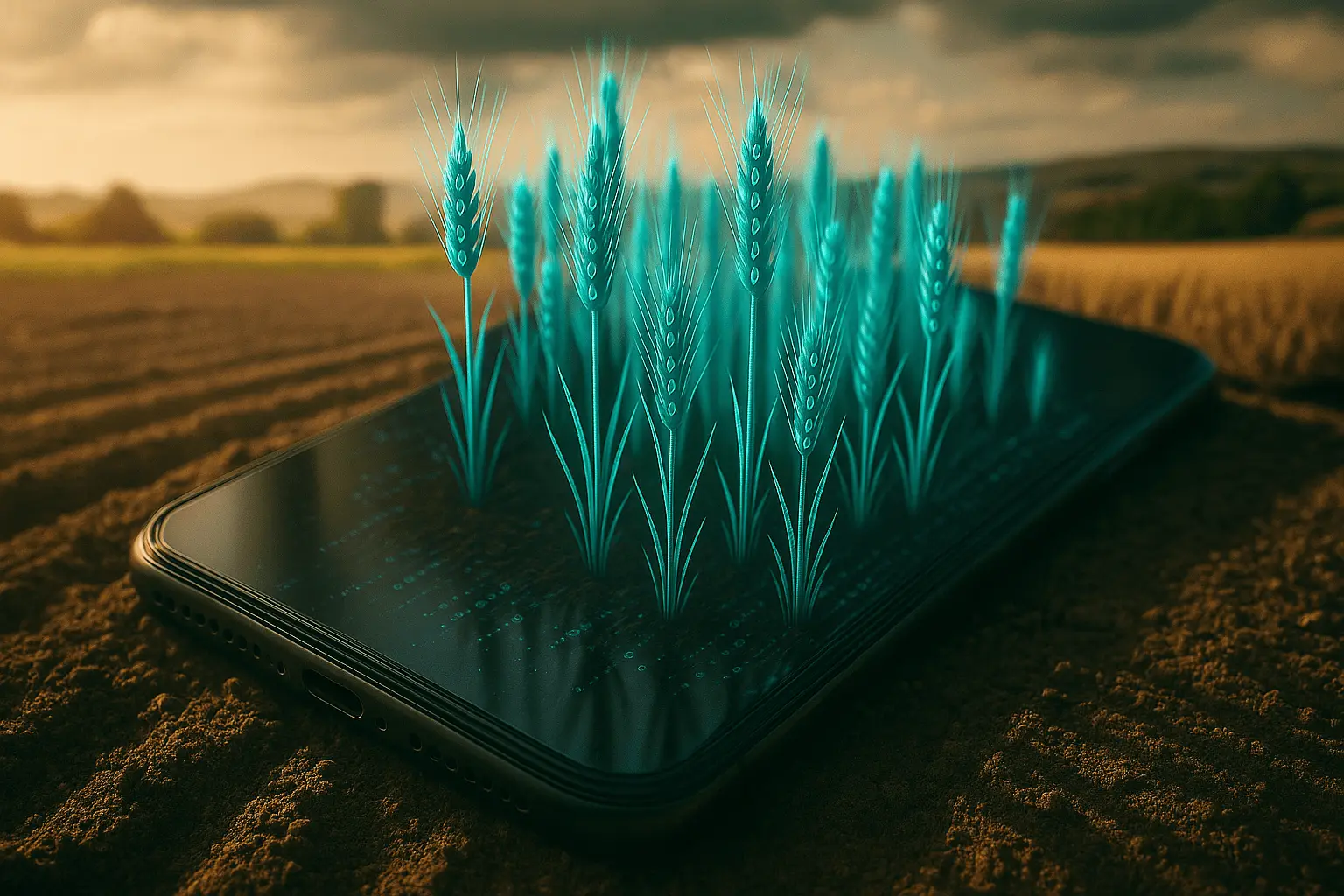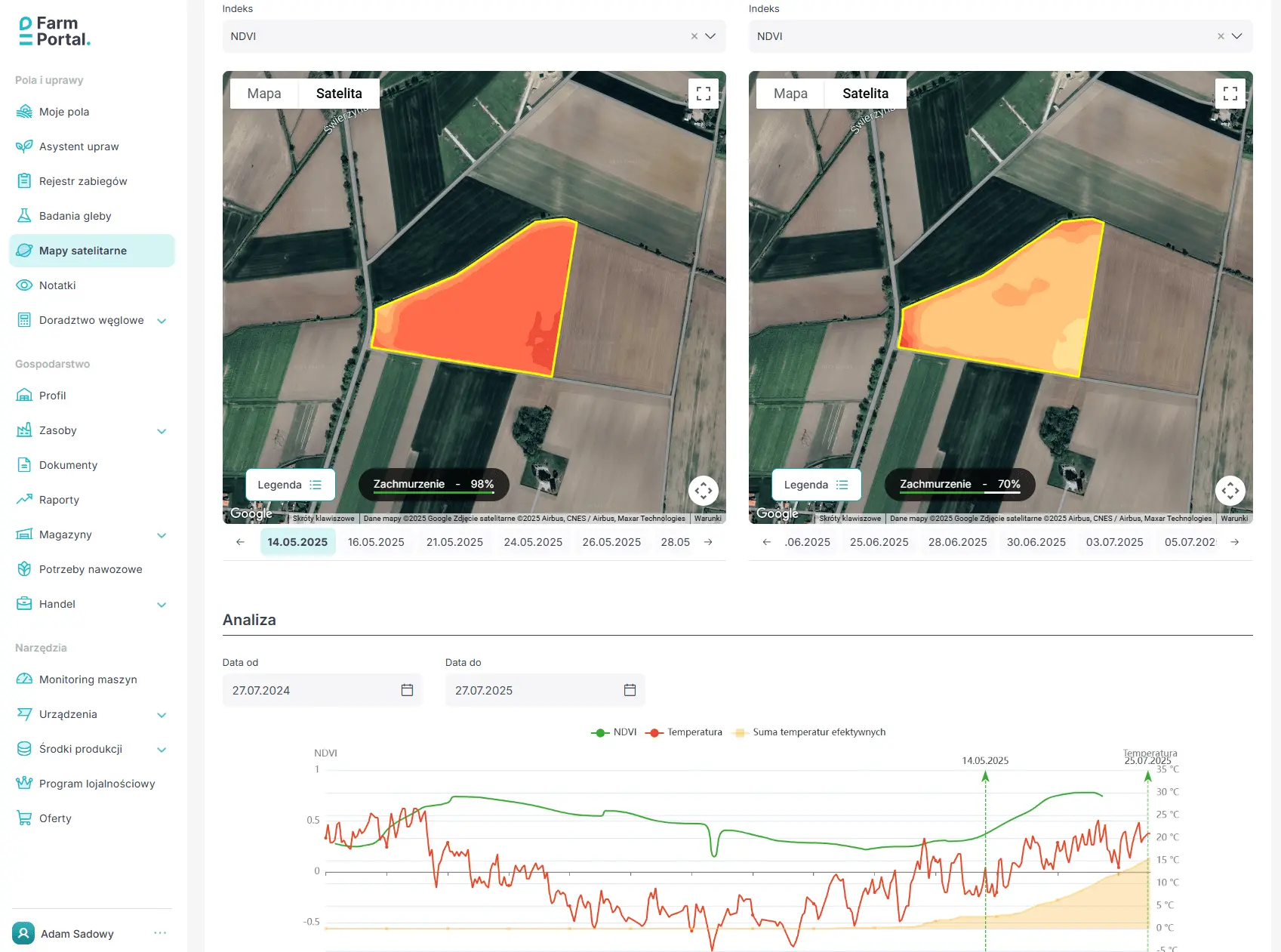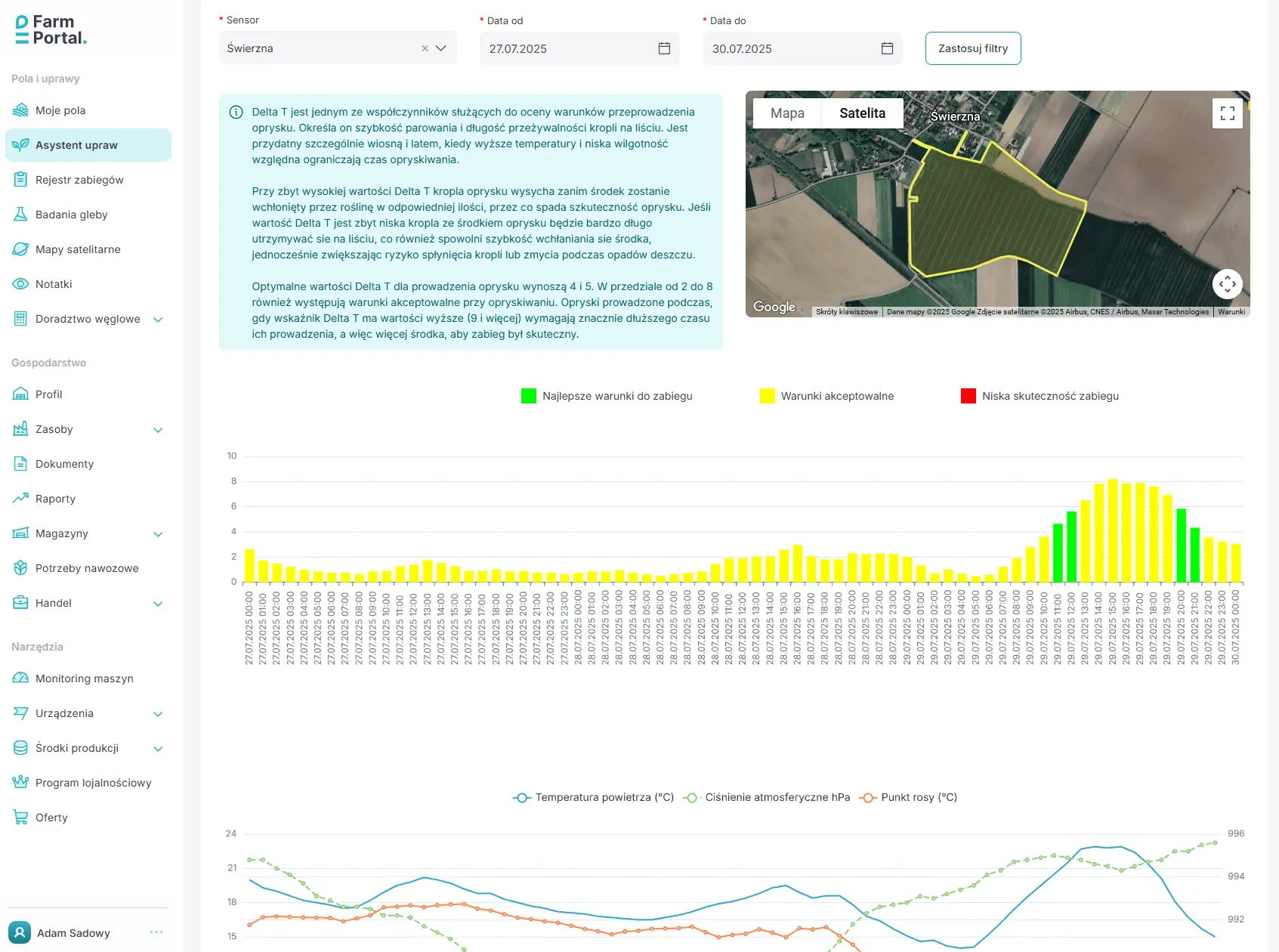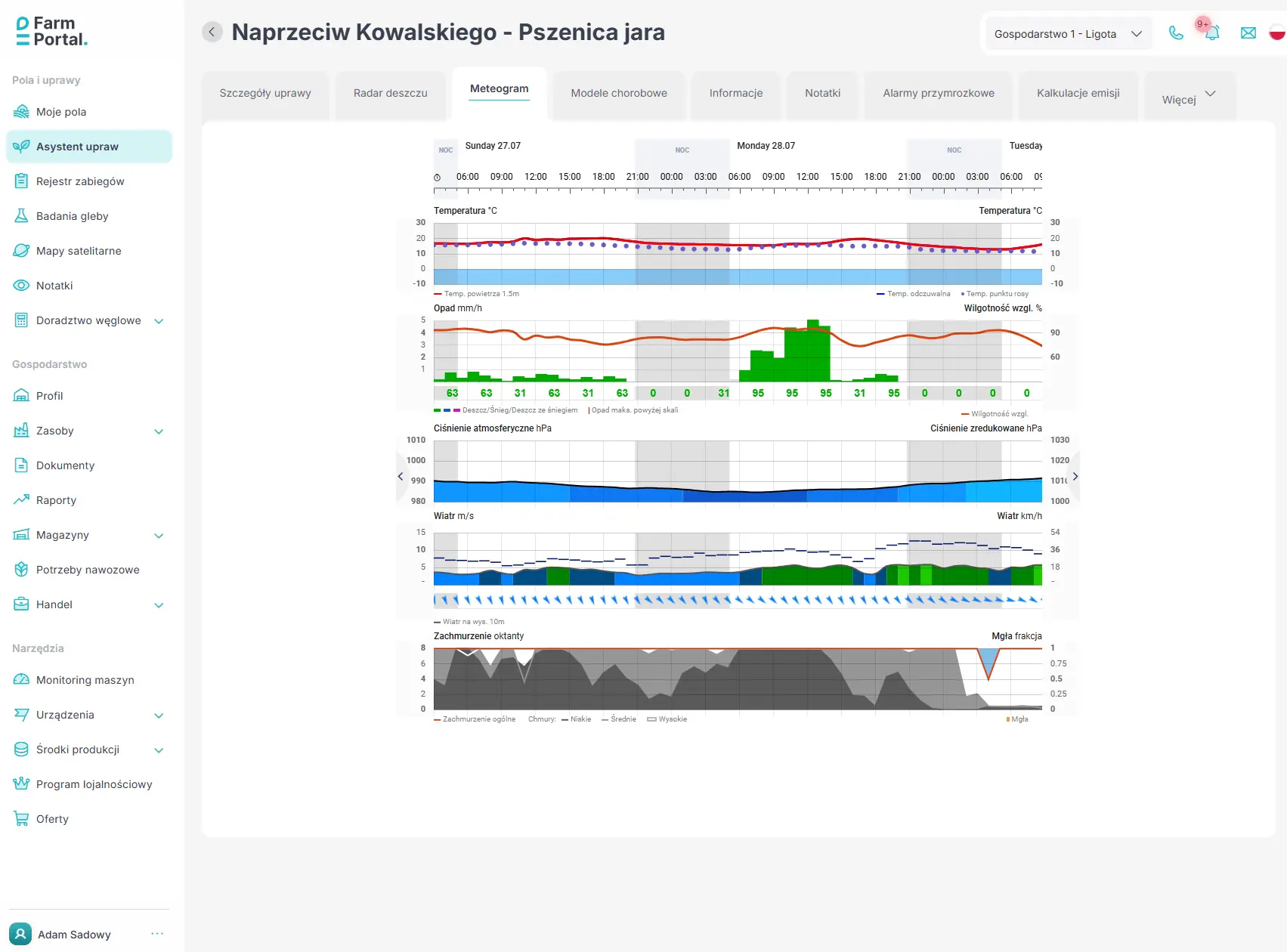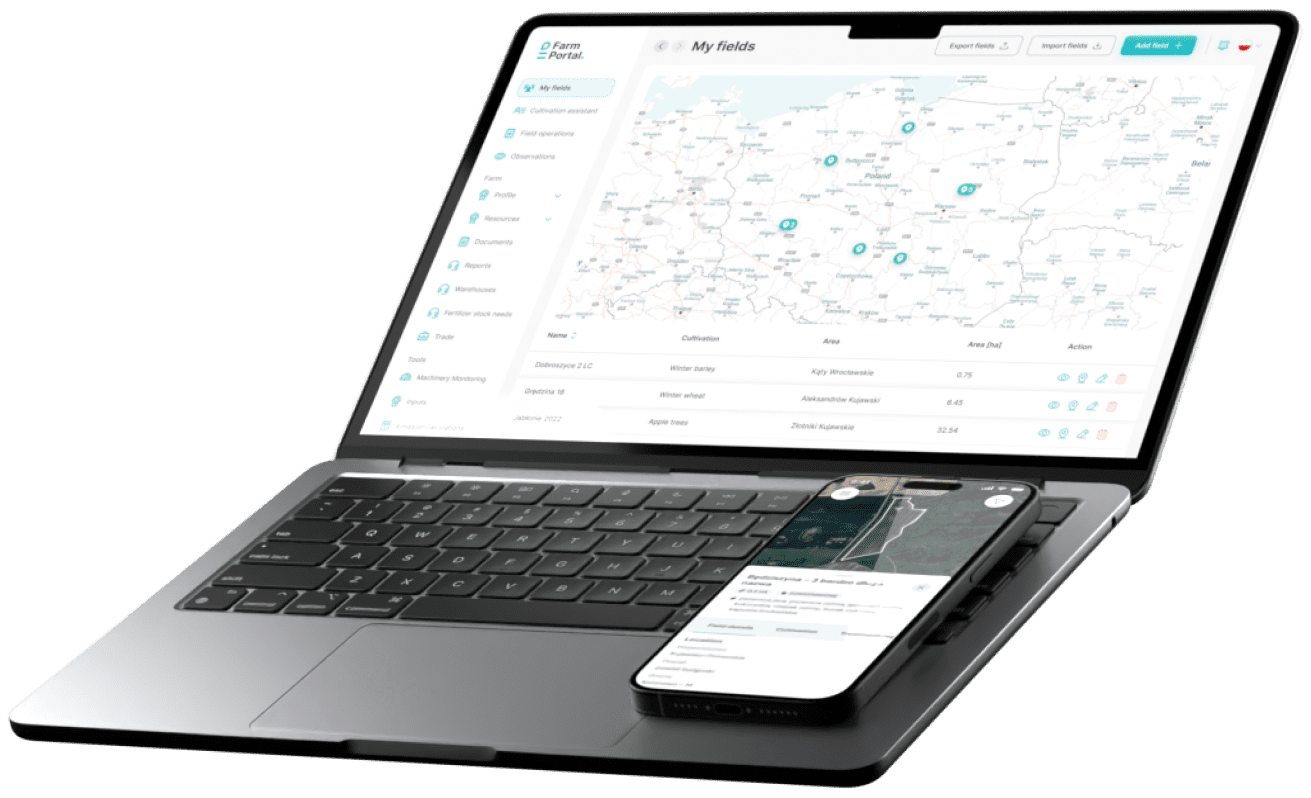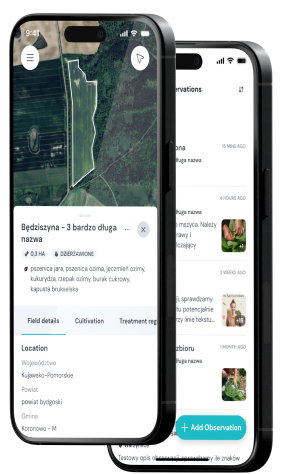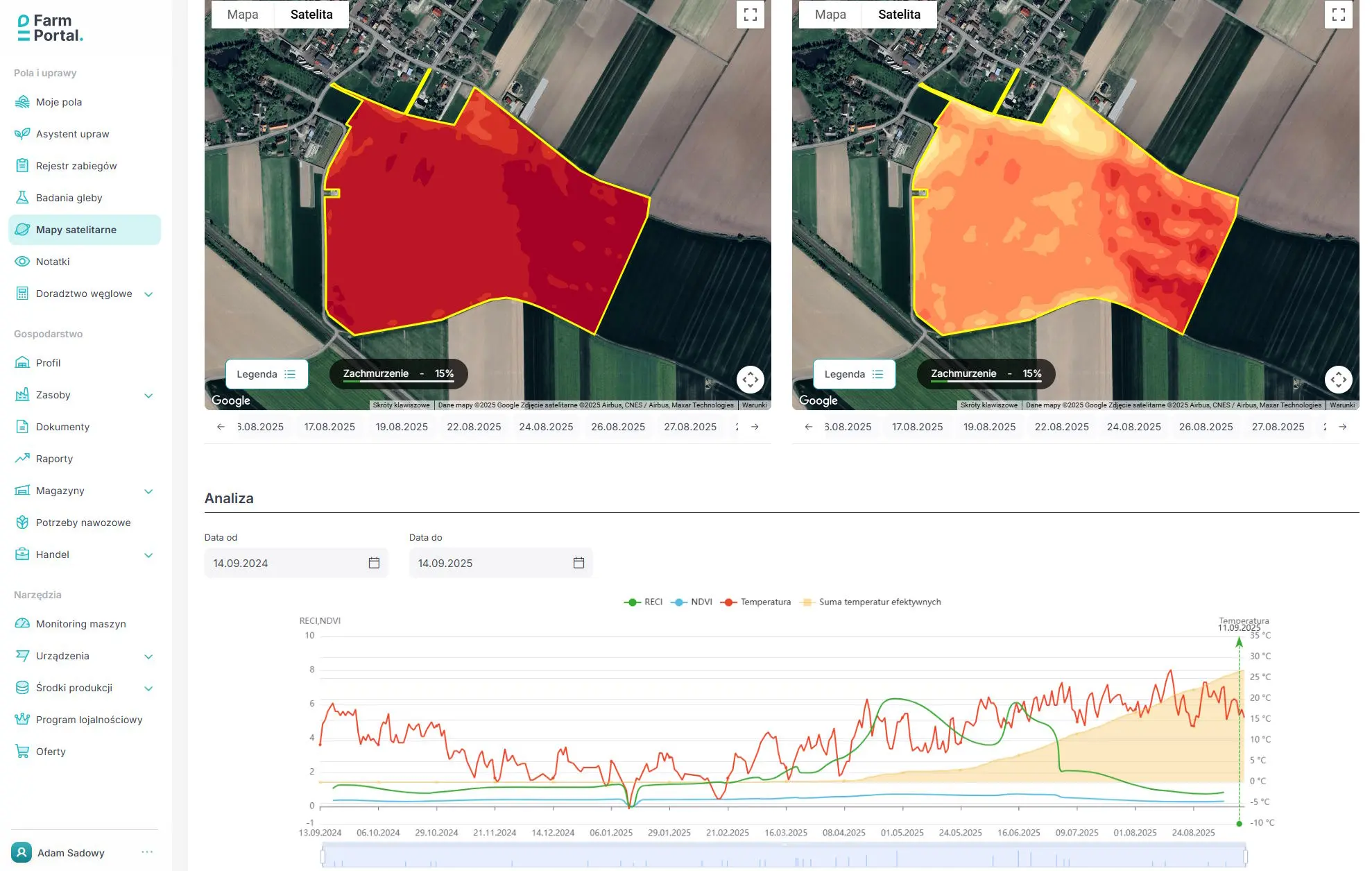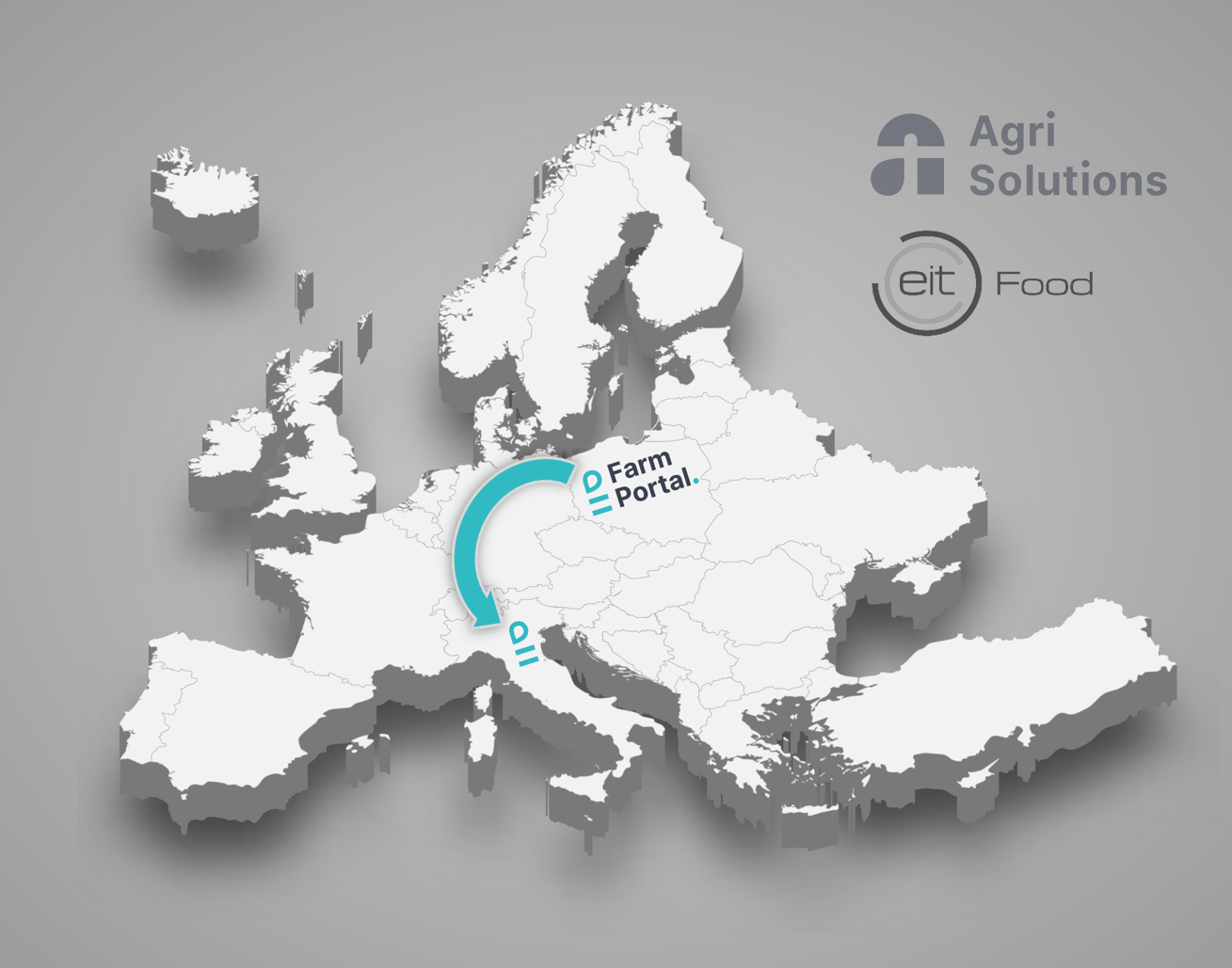What is a Crop Digital Twin?
A Crop Digital Twin is a dynamic, digital representation of a real-world crop that continuously reflects its status, growth phase, environmental conditions, and agronomic history. By combining spatial, weather, and soil data with information on field operations, a digital twin enables comprehensive remote monitoring and analysis of crop condition – without needing to physically be in the field.
The model updates automatically using data from multiple sources, including sensors, IoT devices, agricultural machinery, weather stations, satellite imagery, and farmer-entered data. It is a powerful tool that helps farmers "see inside" the field, better understand biological processes, respond to risks, and make informed operational decisions.
What is Required to Implement a Crop Digital Twin?
Creating a fully functional digital twin requires the integration of appropriate hardware, data sources, and a centralized platform. Key components include:
- IoT sensors and devices – such as weather stations, soil moisture, temperature, and salinity sensors, providing real-time environmental data remotely.
- Imaging sources – satellite imagery, drones, or multispectral cameras that assess plant health, biomass, NDVI indexes, and early warning signs.
- Farm management software – such as FarmPortal, which acts as the central platform, connecting all data sources and making the digital twin accessible via desktop and mobile devices.
- Analytical algorithms and predictive models – used to assess risk, forecast yields or disease threats, and optimize agronomic decisions.
- Data from farm machinery – including automated logs of field activities, routes, and input applications.
- Manual input from farm staff – such as agronomic records, input usage, and financial data.
Implementation Plan for a Crop Digital Twin
Deployment typically begins with digitizing the farm – mapping fields, inputting the historical record of agronomic activities, and setting up key production parameters. This is followed by installing measurement equipment, such as agricultural weather stations or GPS trackers on vehicles, and integrating external data sources, like satellite imagery or virtual weather stations.
FarmPortal makes it easy to connect devices and data streams, as well as integrate with machinery that automatically records operations. Over time, the system builds a historical knowledge base of each field and delivers increasingly accurate recommendations and forecasts. Full implementation can take from a few hours to several weeks, depending on the farm’s complexity, number of sensors, and field size.
When Does the Digital Twin Start Creating Value?
A crop digital twin begins delivering value as soon as data collection is systematic and automated. Even after the first day, users can access insights and comparisons that improve situational awareness and inform daily decisions. Alerts and notifications generated by the system help detect threats early and enable rapid responses.
Long-term usage provides the most benefits: tracking seasonal trends, identifying underperforming field zones, optimizing input use, reducing waste, and building better records for audits and environmental compliance.
The system is particularly valuable in crops with high environmental variability, where real-time data enhances risk management and planning.
Who Benefits from a Crop Digital Twin?
The crop digital twin is a versatile solution that benefits a wide range of agricultural stakeholders:
Small farms gain an intuitive planning and cost-analysis tool with mobile access to field data. Medium and large farms benefit from integration with machinery, workforce management, and detailed profit tracking per field or region. Agri-food processors obtain real-time insights into raw material quality and crop status, improving logistics and procurement planning. Agricultural advisors can work with multiple clients simultaneously, accessing real-time field data and offering tailored advice.
Remote Monitoring, Timely Response, and Smarter Decisions
One of the greatest advantages of a digital twin is the ability to monitor crops remotely and continuously. The system detects anomalies such as drought, frost risk, disease outbreaks, or delayed development, and notifies users accordingly.
This enables faster responses, more precise scheduling of agronomic treatments, and optimization of input use, reducing production losses. It also supports smarter decisions around harvest timing, logistics, and sales strategies.
For agricultural advisors, processors, and produce distributors, this is especially valuable – they can monitor, support, and guide their growers and supply chains more effectively. The FoodPass application complements this, enabling remote advisory services and end-to-end traceability.
FarmPortal Functions That Enable the Digital Twin
FarmPortal is a free platform designed for farmers, fully aligned with the digital twin concept. Its features include:
- Creating and maintaining a field history and treatment log.
- Integration with weather stations and generation of virtual weather stations per field.
- Decision support for irrigation, fertilization (including VRA), and spraying schedules.
- Combining geospatial data, satellite imagery, soil tests, and nutrient recommendations.
- Disease risk monitoring using advanced disease models.
- Generating alerts and growth stage indicators.
- Syncing with tractors and combines, including GPS and navigation logs.
- Producing layered maps and detailed reports.
- Full mobile access to the digital twin at any time.
- Weather radar and localized forecasts.
- Economic modeling and cost accounting tools.
- Carbon footprint calculations and sustainability reporting.
- Integration with geoportals to auto-import field boundaries and identifiers (TERYT).
FarmPortal continues to evolve, integrating more data sources, sensors, and AI models to deliver ever more powerful crop management tools.
Digital Twin and the Evolution to Agriculture 4.0 and 5.0
Agriculture 4.0 represents the era of precision, automation, and data-driven decision-making – and the crop digital twin is a central component. By combining IoT, AI, geospatial analysis, and smart systems, it enables unprecedented control over crop operations.
In the context of Agriculture 5.0, which emphasizes sustainability, human-centric innovation, and responsible technology use, the digital twin plays a growing role. It supports environmentally responsible decision-making, reduces resource consumption, and helps farmers comply with ESG standards and climate goals.
Applications in R&D and Sustainable Farming
The crop digital twin is a critical asset in R&D projects led by Agri Solutions. It enables field testing of innovative practices, algorithm development, and model validation – all based on real, continuous data.
Its structure is also perfectly suited to ESG reporting, carbon farming initiatives, and quality certification programs. It automatically documents input use, emissions, carbon sequestration, crop rotation, and treatment efficacy.
Digital twin technology has already been applied in projects with Agros Nova, Agro Smart Lab, the Polish Potato Federation, and Digital Crops.
The Power of Mobility – Crop Digital Twin in Your Pocket
One of FarmPortal’s greatest strengths is its mobile accessibility. With the app available on both iOS and Android, farmers can access their digital twin in real time – whether in the office, out in the field, meeting with advisors, or at agricultural fairs. This isn't just convenience – it's a competitive advantage.

